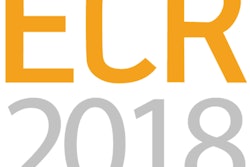
General practitioners (GPs) in the U.K. are ordering more than three times as many diagnostic tests compared with 15 years ago, and these tests are costing the National Health Service (NHS) more than 2.8 billion pounds (3.14 billion euros) a year, according to an article published online on 29 November by BMJ.
This massive increase is partly because GPs now provide more services previously provided by hospitals and monitor more patients with chronic diseases, noted Dr. Jack O'Sullivan, from the Centre for Evidence-Based Medicine at the Nuffield Department of Primary Care Health Sciences in Oxford, U.K., and colleagues. Ordering and reviewing the results of these tests, including imaging, has contributed to a substantial increase in workload, they added.
Using a database of patients registered with general practices, researchers from the universities of Oxford, Bristol, and Southampton looked at the change in the number of tests ordered by GPs between 1 April 2000 and 31 March 2016. They looked at a total of 44 specific tests: 28 laboratory tests, 11 imaging tests, and five miscellaneous tests, such as spirometry, cervical smears, and electrocardiography.
The group found that between 2000-2001 and 2015-2016 the number of tests ordered per 10,000 person years increased 3.3-fold from 14,869 to 49,267. This represents an 8.5% increase per year. The increase in the number of tests ordered was slightly greater in men (3.4-fold increase) than in women (3.3-fold increase) and greatest in elderly patients (4.6-fold increase for patients old than 85 years).
"Patients in 2015-16 had on average five tests per year, compared with 1.5 in 2000/1," the authors wrote.
Significant rises in the number of tests ordered were seen for 40 of the 44 individual tests and across all three different test groups (laboratory, imaging, and miscellaneous).
Changes in service provision
The researchers think the increased testing might be partly due to changes to NHS service provision. For example, over the study period, GPs' ability to be able to order diagnostic tests (particularly imaging) expanded, many services were diverted from secondary to primary care requiring tests to be ordered by GPs rather than hospitals, and the Quality and Outcomes Framework, which incentivizes GPs to monitor chronic diseases using laboratory tests, was introduced.
Increased testing could be a reflection of the increasing number and duration of consultations in general practice with tests being used for "strategic, nonmedical reasons," such as to reassure patients and end consultations, they added.
The rise in GP requests could also reflect a greater expectation among patients that they should be tested as they have become more informed and been encouraged to participate in decisions about their care.
The authors point out that this is an observational study, so no firm conclusions can be drawn about cause and effect, and inconsistencies in coding and ordering of tests and their results, particularly in the early years before electronic systems were in place, also may have influenced the findings. Nevertheless, they noted that whatever factors contribute to increased test use, this has major implications for GPs' workload and the NHS budget.
What's the real cost?
Assuming it takes two or three minutes to review a test, the authors estimated that the average GP spent 1.5 to 2 hours reviewing test results each workday in 2015/2016. This is a more than threefold increase from the estimated 2000/2001 figure of 25 to 35 minutes daily.
Conservative estimates from the U.K. National Institute for Health and Care Excellence put the average cost of a laboratory test at 6 pounds (7 euros), an imaging test at 29 pounds (33 euros), and a miscellaneous test at 53 pounds (60 euros). Based on these figures, O'Sullivan and colleagues estimated that tests ordered by GPs cost 2.8 billion pounds (3.14 billion euros) in 2015/2016.
"These estimates are likely an underestimation of the true costs," they wrote. "Our estimates only account for the direct cost of tests and do not include the cost of general practitioners reviewing the result or the administration team processing the result."



















